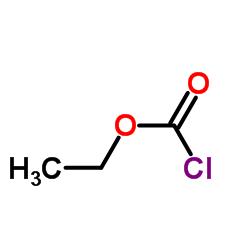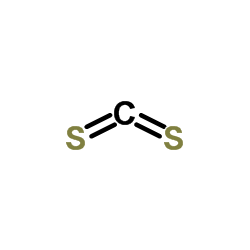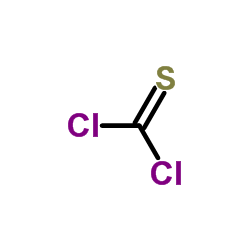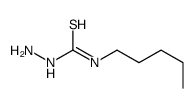629-12-9
| Name | pentyl isothiocyanate |
|---|---|
| Synonyms |
1-isothiocyanatopentane
EINECS 211-075-6 MFCD00014444 |
| Density | 0.93 |
|---|---|
| Boiling Point | 95 °C |
| Molecular Formula | C6H11NS |
| Molecular Weight | 129.22300 |
| Flash Point | 32°C |
| Exact Mass | 129.06100 |
| PSA | 44.45000 |
| LogP | 2.27940 |
| Index of Refraction | 1.4965 |
Synonym:n-Amylisothiocyanat Section 2 - COMPOSITION, INFORMATION ON INGREDIENTS
Risk Phrases: 20/21/22 34 Section 3 - HAZARDS IDENTIFICATION EMERGENCY OVERVIEW
Harmful by inhalation, in contact with skin and if swallowed. Causes burns.Moisture sensitive. Potential Health Effects Eye: Causes eye burns. Lachrymator (substance which increases the flow of tears). Skin: Harmful if absorbed through the skin. Causes skin burns. Ingestion: Harmful if swallowed. Causes gastrointestinal tract burns. Inhalation: Harmful if inhaled. Causes chemical burns to the respiratory tract. Chronic: Not available. Section 4 - FIRST AID MEASURES Eyes: Immediately flush eyes with plenty of water for at least 15 minutes, occasionally lifting the upper and lower eyelids. Get medical aid immediately. Skin: Get medical aid immediately. Immediately flush skin with plenty of water for at least 15 minutes while removing contaminated clothing and shoes. Ingestion: Do not induce vomiting. Get medical aid immediately. Inhalation: Get medical aid immediately. Remove from exposure and move to fresh air immediately. If not breathing, give artificial respiration. If breathing is difficult, give oxygen. Notes to Physician: Treat symptomatically and supportively. Section 5 - FIRE FIGHTING MEASURES General Information: As in any fire, wear a self-contained breathing apparatus in pressure-demand, MSHA/NIOSH (approved or equivalent), and full protective gear. Extinguishing Media: Use foam, dry chemical, or carbon dioxide. Section 6 - ACCIDENTAL RELEASE MEASURES General Information: Use proper personal protective equipment as indicated in Section 8. Spills/Leaks: Absorb spill with inert material (e.g. vermiculite, sand or earth), then place in suitable container. Section 7 - HANDLING and STORAGE Handling: Do not breathe dust, vapor, mist, or gas. Do not get in eyes, on skin, or on clothing. Use only in a chemical fume hood. Storage: Store in a cool, dry place. Store in a tightly closed container. Corrosives area. Store under nitrogen. Section 8 - EXPOSURE CONTROLS, PERSONAL PROTECTION Engineering Controls: Facilities storing or utilizing this material should be equipped with an eyewash facility and a safety shower. Use adequate ventilation to keep airborne concentrations low. Exposure Limits CAS# 629-12-9: Personal Protective Equipment Eyes: Not available. Skin: Wear appropriate protective gloves to prevent skin exposure. Clothing: Wear appropriate protective clothing to prevent skin exposure. Respirators: Follow the OSHA respirator regulations found in 29 CFR 1910.134 or European Standard EN 149. Use a NIOSH/MSHA or European Standard EN 149 approved respirator if exposure limits are exceeded or if irritation or other symptoms are experienced. Section 9 - PHYSICAL AND CHEMICAL PROPERTIES Physical State: Liquid Color: colorless Odor: Not available. pH: Not available. Vapor Pressure: Not available. Viscosity: Not available. Boiling Point: 117 - 119 deg C @70mmHg Freezing/Melting Point: Not available. Autoignition Temperature: Not available. Flash Point: Not available. Explosion Limits, lower: Not available. Explosion Limits, upper: Not available. Decomposition Temperature: Solubility in water: Specific Gravity/Density: 0.93 Molecular Formula: C6H11NS Molecular Weight: 129 Section 10 - STABILITY AND REACTIVITY Chemical Stability: Not available. Conditions to Avoid: Incompatible materials, exposure to moist air or water. Incompatibilities with Other Materials: Bases, amines, strong oxidizing agents. Hazardous Decomposition Products: Nitrogen oxides, carbon monoxide, oxides of sulfur, carbon dioxide. Hazardous Polymerization: Has not been reported Section 11 - TOXICOLOGICAL INFORMATION RTECS#: CAS# 629-12-9 unlisted. LD50/LC50: Not available. Carcinogenicity: Pentyl isothiocyanate - Not listed by ACGIH, IARC, or NTP. Section 12 - ECOLOGICAL INFORMATION Section 13 - DISPOSAL CONSIDERATIONS Dispose of in a manner consistent with federal, state, and local regulations. Section 14 - TRANSPORT INFORMATION IATA Shipping Name: CORROSIVE LIQUID, TOXIC, N.O.S.* Hazard Class: 8 (6.1) UN Number: 2922 Packing Group: III IMO Shipping Name: CORROSIVE LIQUID, TOXIC, N.O.S. Hazard Class: 8 (6.1) UN Number: 2922 Packing Group: III RID/ADR Shipping Name: CORROSIVE LIQUID, TOXIC, N.O.S. Hazard Class: 8 (6.1) UN Number: 2922 Packing group: III Section 15 - REGULATORY INFORMATION European/International Regulations European Labeling in Accordance with EC Directives Hazard Symbols: C Risk Phrases: R 20/21/22 Harmful by inhalation, in contact with skin and if swallowed. R 34 Causes burns. Safety Phrases: S 26 In case of contact with eyes, rinse immediately with plenty of water and seek medical advice. S 36/37/39 Wear suitable protective clothing, gloves and eye/face protection. S 45 In case of accident or if you feel unwell, seek medical advice immediately (show the label where possible). WGK (Water Danger/Protection) CAS# 629-12-9: No information available. Canada None of the chemicals in this product are listed on the DSL/NDSL list. CAS# 629-12-9 is not listed on Canada's Ingredient Disclosure List. US FEDERAL TSCA CAS# 629-12-9 is not listed on the TSCA inventory. It is for research and development use only. SECTION 16 - ADDITIONAL INFORMATION N/A |
| Risk Phrases | R10 |
|---|---|
| Safety Phrases | S26-S36/37/39 |
| RIDADR | 3080 |
| Packaging Group | III |
| Hazard Class | 8 |
|
~90% 
629-12-9 |
| Literature: The Green Cross Corporation Patent: US5750545 A1, 1998 ; |
|
~61% 
629-12-9 |
| Literature: Munch, Henrik; Hansen, Jon S.; Pittelkow, Michael; Christensen, Jorn B.; Boas, Ulrik Tetrahedron Letters, 2008 , vol. 49, # 19 p. 3117 - 3119 |
|
~88% 
629-12-9 |
| Literature: Kim; Song; Ryu Synthetic Communications, 1994 , vol. 24, # 8 p. 1101 - 1105 |
|
~% 
629-12-9 |
| Literature: Tetrahedron Letters, , vol. 38, # 9 p. 1597 - 1598 |
|
~% 
629-12-9 |
| Literature: Medicinal Chemistry Research, , vol. 22, # 7 p. 3119 - 3125 |
|
~% 
629-12-9 |
| Literature: Medicinal Chemistry Research, , vol. 22, # 7 p. 3119 - 3125 |
|
~% 
629-12-9 |
| Literature: Recueil des Travaux Chimiques des Pays-Bas, , vol. 45, p. 422 Chem. News J. Ind. Sci., , vol. 134, p. 5 Chem. Zentralbl., , vol. 98, # I p. 1300 |
| Precursor 6 | |
|---|---|
| DownStream 2 | |









![Hydrazinecarboxamide, 2-[(pentylamino)thioxomethyl]- structure](https://image.chemsrc.com/caspic/412/6318-96-3.png)
